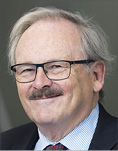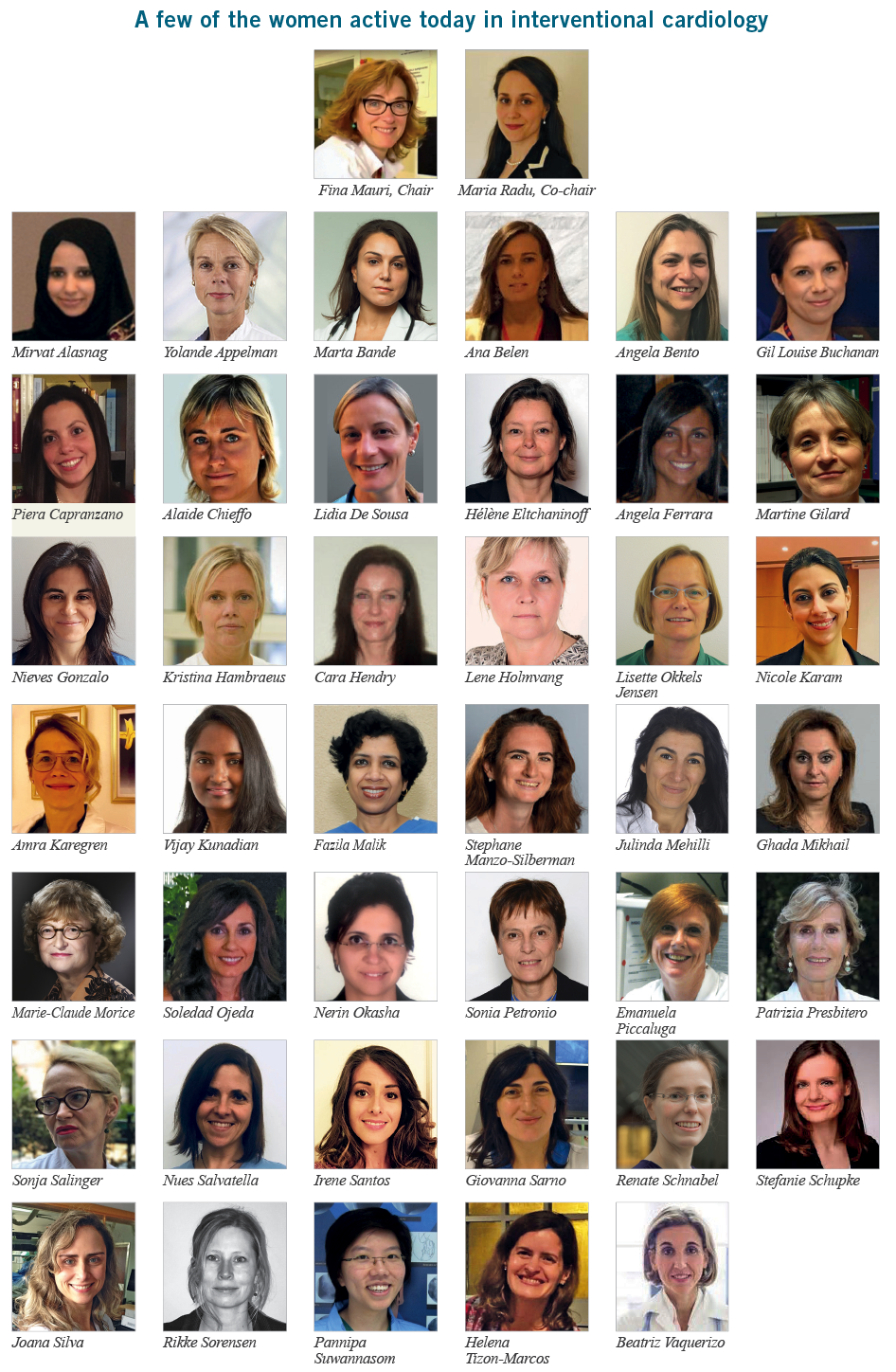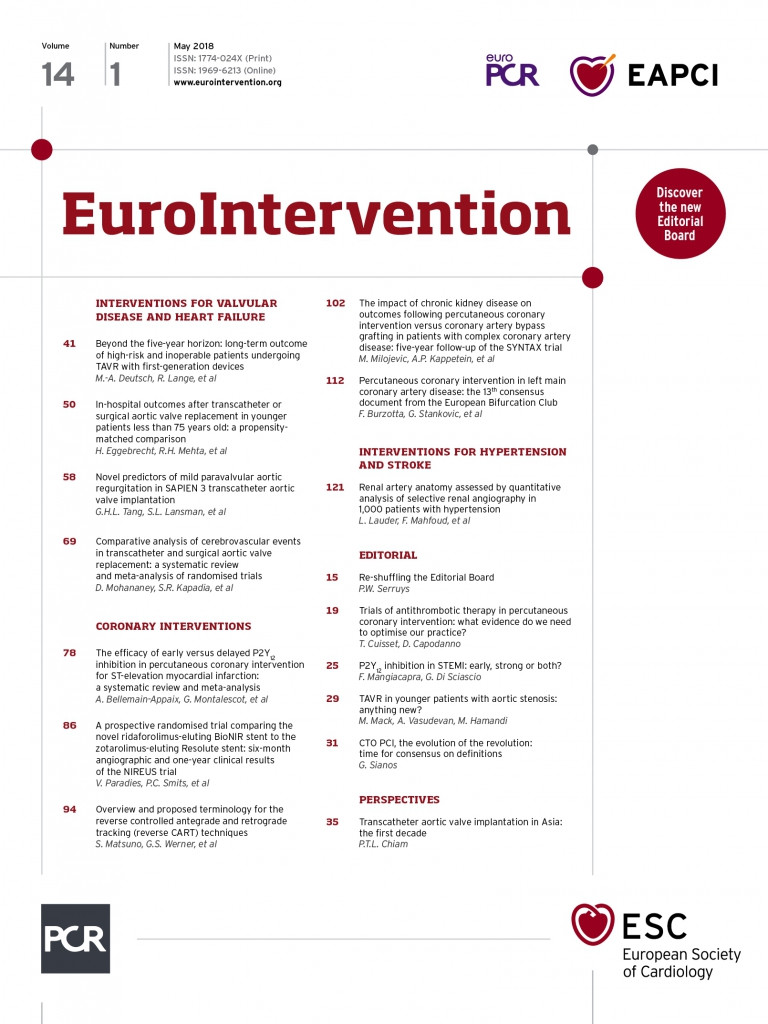
EuroIntervention is 12 years old, and the Editorial Board has been through many changes and metamorphoses over this time; yet, it is still presented on a single page in the Journal. The Editorial Board felt that it was time to expand, re-shuffle, and describe the participants of the Board on more than one page, taking, as our example, many of the other journals which have two to three full pages describing their Editorial Board participants.
One recent major change was the introduction of three Deputy Editors (Robert Byrne, Davide Capodanno and Darren Mylotte), who are brilliant, sharp, very productive individuals and who have been a real asset to the journal over the last year.
In a highly competitive publishing environment, the Editorial Board felt that the level of expertise on valves and structural heart had to be reinforced by the introduction of a fourth Deputy Editor, Lars Søndergaard. Robert, Davide, Darren and I look forward to bringing the Journal to an even higher level of structural expertise with a senior individual like Lars Søndergaard, whose standing and pioneering activity in the field are uncontested.
Our Guest Editor is Alec Vahanian, assisted by five senior colleagues with enormous experience in editorship among whom are two impressive North American cardiologists (David Holmes and John Webb), a great interventionalist (Antonio Colombo), a brilliant trialist (Adnan Kastrati), and the Chief Editor of our mother journal, the European Heart Journal (Thomas Lüscher).
Over the years, Ron Waksman has been very present on the Editorial Board held at EuroPCR and, for more than two years, he has been our North American Associate Editor. Recently, we have thanked him for his contribution in order for him to enter into a new chapter of his professional life. We later approached Spencer King, who understandably was not able to fulfil the role due to a conflict of interest with other, American-based, journals.
We are happy to disclose that we have now been successful in our endeavour to find new Associate Editors for North America, namely Ted Feldman assisted by Raj Makkar.
We are excited to foresee the development that this collaboration could bring.
Currently, South America is very sparsely represented in our journal: it is the smallest worldwide contributor to EuroIntervention, with North America contributing 11% of the articles and Asia contributing around 22%. Therefore, we approached the father and son team of Gaston Rodriguez-Granillo and Alfredo Rodriguez to act as our new South American Associate Editors for EuroIntervention.
Of course, South America has its own community of journals and interventional cardiology associations. Nevertheless, we are expecting an increase in submissions as a result of the contribution of our newly appointed duo of Associate Editors for South America.
The choice of editors for the Asia-Pacific region was quite an easy one to make: it was decided to include as Associate Editors for the Far East the five Editors of AsiaIntervention (Takeshi Kimura, Japan; Runlin Gao, China; Upendra Kaul, India; Seung-Jung Park, Korea; and Huay Cheem Tan, Singapore).
AsiaIntervention is still in its early years and has a long way to go before being recognised by congressional libraries; however, I am confident that this selection of Editors will be helpful in terms of the dialogue between Europe and the Far East.
A great novelty within the field of Editorial Boards is the introduction and integration of two new Editors for Africa, Farrel Hellig and Mpiko Ntsekhe, based on the excellent idea of William Wijns (Chairman of PCR). I can only applaud this initiative having spent a great deal of my youth in Africa.
The International Associate Editors are certainly the motor and the core of the Journal. This group of people attend the weekly Editorial Board and their presence and contribution to the Journal are recorded in order to ensure optimal efficiency. Once again, I must thank this group of individuals for being the ultimate judge of what we publish and for providing constant advice and strategies to the Journal.
The local Associate Editors, as previously indicated, are a group of local, young cardiologists, who are part of the academic team of the ECRI (European Cardiovascular Research Institute) in Rotterdam. They are mostly silent during the weekly Editorial Board meeting, but always on hand and well clued-in regarding the research of material, previous publications and so on.
In relation to the statistical editors, from the beginning we took advantage of the expertise of Eric Boersma and his colleagues at EMC Erasmus University. A novelty in the field is that we have now introduced international statistical experts, for example Marc Jolicoeur, who is, so far, our only expert in Bayesian statistics.
Then we come to the list of EuroIntervention’s Co-Editors. This is a remarkable list of people who were involved in the creation of the Journal 13 years ago and who remain very active today – Alain Cribier, Michael Haude and William Wijns, to name but a few.
A relatively new position is that of eCardiology Editor, a post filled by Nico Bruining. He is very much involved in the European Society as a member of the eCardiology Working Group, is an expert on eHealth topics, and a faculty member of the “European Congress on eHealth and eCardiology”.
Ranil De Silva and Ramzi Khamis, both of Imperial College London, are responsible for translational research. From time to time we receive experimental work related to a device in the Journal. Both editors are responsible for the evaluation of these papers which are frequently (if accepted) accompanied by one of their dynamic editorials.
Although congenital heart disease in itself is not a large part of our Journal, the team comprises well-known interventional cardiologists from around the world and from time to time we publish this type of article.
The section on structural editors can only be described as a “who’s who” in the field, starting with Alain Cribier and Stephan Windecker. I strongly recommend that you peruse this list of names which showcases the “crème de la crème” in the field of structural heart disease, including a mix of interventionalists and surgeons.
Since a great deal of novelty begins in EuroPCR, we can count on this team to provide the Journal with novelty in the field.
The peripheral editors section is almost an “Italian affair” and includes Alberto Cremonesi who runs the peripheral course for EuroPCR.
Cost-effectiveness and quality of life have always been among the interests of interventional cardiologists. In that respect we are very lucky to have Isabelle Durand-Zaleski from France and Christina Maar Andersen from Denmark.
The surgical component of EuroIntervention was a wish 12 years ago though it did not fully flourish as we wanted. However, we remain very attached to the concept that the Heart Team must work together with the surgeon. The team comprises Michael Mack, Neil Moat, David Taggart and Ottavio Alfieri. Despite the setback regarding renal denervation, Felix Mahfoud and many others keep the field alive. There might even be a rebirth of renal denervation on the horizon in patients who are not, per se, resistant to medication.
Imaging is becoming increasingly more important in the field of interventional cardiology. We have a superb array of experts on MSCT, echocardiology, OCT, IVUS, MRI, and so on. We are proud to have in that group Stephan Achenbach who is the chairman of the scientific programme of the ESC as well as Jeroen Bax, the current president of the ESC.
Drug device interaction is of paramount importance in our subspeciality. No need to mention the huge field of DAPT, with its debate and continuous change of strategy which has been captured brilliantly by experts such as Dominick Angiolillo, Alaide Chieffo, Thomas Cuisset, Marco Valgimigli and Pascal Vranckx. I am sure that shortly we will be able to add to this list Gabriel Steg, who will play an important role in integrating Pharma into the EuroPCR congress.
We are pleased as well to have two remarkable stroke editors and pioneers in the field of revascularisation, Omer Goktekin and Mikaël Mazighi. Both have repeatedly published in EuroIntervention on the need to see the interventional cardiologist collaborating with the neuroradiologist in order to take care of the significant unmet needs that acute stroke represents.
Finally, we have the International Editorial Board, which is available for your perusal. We are still open to welcoming young colleagues to join us. Of course, your request to be a part of the International Editorial Board will be assessed by myself and the Deputy Editors, and the applicant’s track record, publications and involvement in the field will be reviewed.
We perhaps should have abided by the “ladies first” rule, beginning our discussion with the presence of female cardiologists within our board of interventional cardiologists. However, I have chosen instead to end my discussion by speaking specifically about them and their role in the future, especially in relation to EuroIntervention. I have always had a tremendous respect for my female colleagues and their work within our field. They are often seen as playing two different roles: interventional cardiologist and mother. I am full of respect for these individuals who can lead such a challenging double life successfully, combining family with their professional responsibilities.
In closing, I must confess that I recently wondered who these female cardiologists really were. I wrote to the ESC requesting a list of female interventional cardiologists who were members of the EAPCI and was somewhat surprised by the response which stated that, due to data protection in France, they were unable to disclose the names of the female and male members of the organisation. With the pressing need of shuffling the Editorial Board I took a shortcut and used the names of all the members of the Women Committee. The membership of this group and their male counterparts is, for the time being, something of a “secret society”. However, Marielle De La Torre, EAPCI Association Manager, proposed contacting all female EAPCI members on my behalf. In the future, I will use this advice and contact all members one by one to be sure that the “fair sex” is properly represented within the Editorial Board of EuroIntervention.


